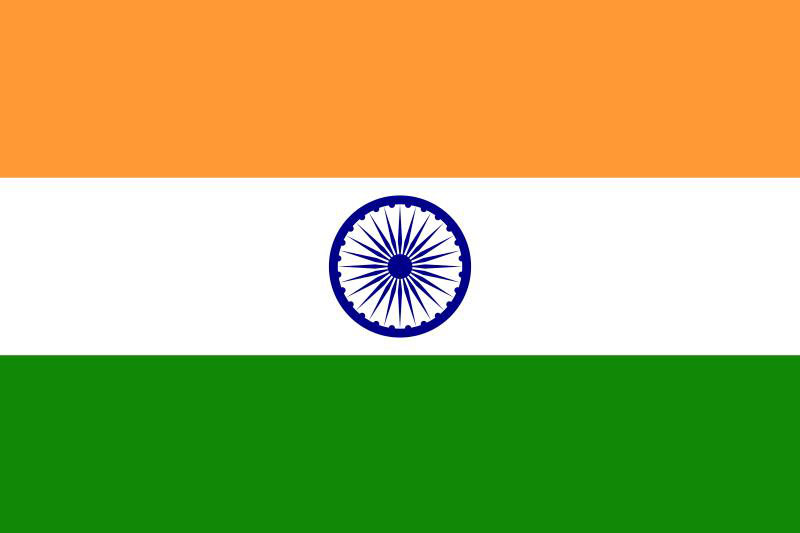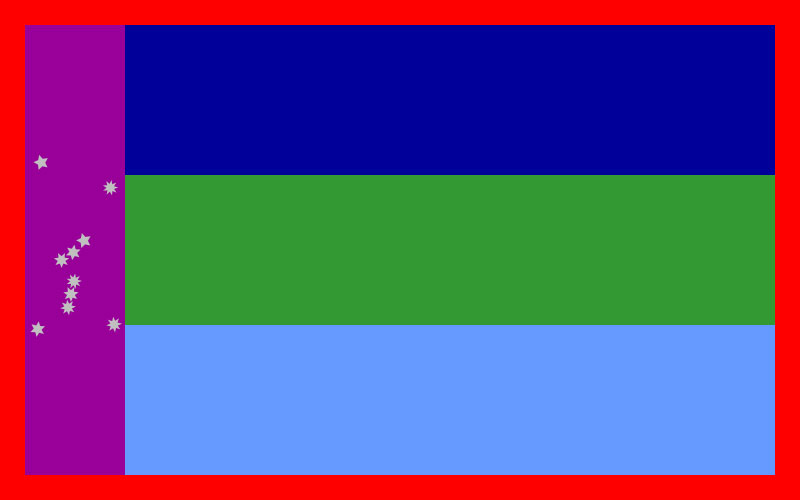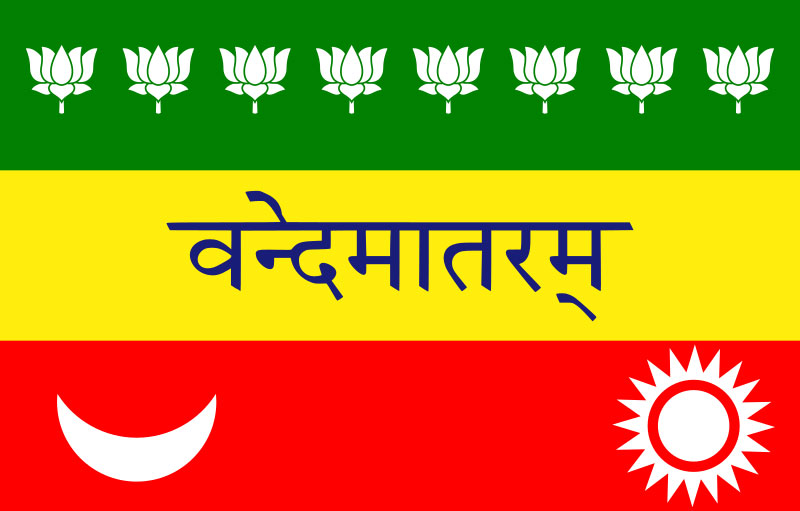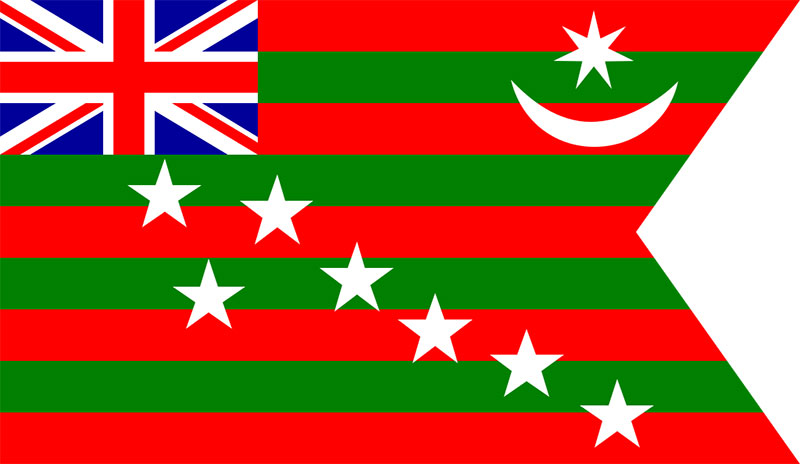
With every country and with every autonomy, we need a symbol. And for years, when someone needed to assert the domination, all they did was make a flag.
Flags came to symbolise leaders, communities, gods, merchant and craft guilds, ships, and towns variously. A flag often gained the same respect as was accorded to the person or thing which it represented. In battle, the loss of a flag was a severe blow.
The Indian flag represents our struggle to get independence from the colonial British, but the flag didn't always look the way it did today. It went through many changes, all while our ancestors fought in the background for our country.
As most of us know, India was never one country before the British. We were a multitude of kingdoms that outsiders would refer to as Hindustan. Every kingdom had its own flag. Therefore Hindustan had hundreds upon hundreds of flags. The idea of a single Indian flag was first thought of by the British colonisers after the revolt of 1857, our first attempt at independence.
The first flag looked similar to the flags of other British colonies like Canada and South Africa. It was a red-coloured flag with the union jack or the united flag in the upper left quadrant and a 'Star of India' capped by the royal crown in the middle of the right half. Now how does the star represent India at all? In response to this, Queen Victoria created a Knight Commander of the Order of the Star of India to honour services to the empire by her Indian subjects.
In 1904, another flag was proposed but was only seen in an Anglo-Indian weekly. The dark blue band represented Hindus and Buddhists, the green band represented Muslims, and the light blue band represented Christians. The vertical purple band on the left side contained the stars from the Orion constellation, which represented the provinces and states. The surrounding red border symbolised India being kept united and whole by British rule. But this one never really came alive.

In 1905 came the partition of Bengal, and with that came a demand for a new flag, one that represented both the Hindu and the Muslim community. William Coldstream, a British member of the Indian civil service, suggested changing the star of India from the original flag into something more Indian. This proposal was rejected by lord Curzon but sparked a discussion amongst Indians for a suitable flag with an appropriate symbol. The symbols in vogue included the Ganesha, advocated by Bal Gangadhar Tilak, and Kali, supported by Aurobindo Ghosh and Bankim Chandra Chattopadhyay. Another symbol was the cow, or Gau Mata (cow mother). However, all these symbols were Hindu-centric and did not suggest unity with India's Muslim population.
And so, the partition of Bengal led to the invention of what was known as the Vande Mataram flag. The Vande Mataram flag, part of the nationalist Swadeshi movement, comprised Indian religious symbols represented in western heraldic fashion. The tricolour flag included eight white lotuses on the upper green band representing the eight provinces, a sun and a crescent on the bottom red band, and the Vande Mataram slogan in Hindi on the central yellow band. The flag was launched in Calcutta bereft of any ceremony, and the launch was only briefly covered by newspapers. The flag was not covered in contemporary governmental or political reports either but was used at the annual session of the Indian National Congress. A slightly modified version was subsequently used by Madam Bhikaji Cama at the second International Socialist Congress in Stuttgart in 1907. Despite the multiple uses of the flag, it failed to generate enthusiasm amongst Indian nationalists. Hence why no one barely knows anything about it.

Around the same time, another proposal for the flag was initiated by Sister Nivedita, a Hindu reformist and disciple of Swami Vivekananda. The flag consisted of a thunderbolt in the centre and a hundred and eight oil lamps for the border, with the Vande Mataram caption split around the thunderbolt. It was also presented at the Indian National Congress meeting in 1906. Soon, many other proposals were initiated, but none of them gained attention from the nationalist movement.
In 1916, Pingali Venkayya submitted thirty new designs in the form of a booklet funded by the High Court of Madras members. These many proposals and recommendations did little more than keep the flag movement alive.
The same year, Annie Besant and Bal Gangadhar Tilak adopted a new flag as part of the Home Rule Movement. The flag included the Union Jack in the upper left corner, a star and crescent in the upper right, and seven stars displayed diagonally from the lower right, on a background of five red and four alternating green bands. The flag resulted in the first governmental initiative against any nationalistic flag, as a magistrate in Coimbatore banned its use. And as with every ban, it was followed by a public debate on the function and importance of a national flag.

In the early 1920s, national flag discussions gained prominence across most British dominions following the peace treaty between Britain and Ireland. In November 1920, the Indian delegation to the League of Nations wanted to use an Indian flag. This prompted the British Indian government to place renewed emphasis on the flag as a national symbol. They kept using the flag they first thought of, and as might have been suspected, Indians weren't all that happy about it.
In April 1921, Mohandas Karamchand Gandhi wrote in his journal Young India about the need for an Indian flag, proposing a flag with the charkha or spinning wheel at the centre. The idea of the spinning wheel was put forth by Lala Hansraj, and Gandhi commissioned Pingali Venkayya to design a flag with the spinning wheel on a red and green banner, the red colour signifying Hindus and the green standing for Muslims. Gandhi wanted the flag to be presented at the Congress session of 1921, but it was not delivered on time, and another flag was proposed at the session.
Gandhi then realised that while Hindus and Muslims were a majority in India, many other religions in the nation deserved attention as they too were Indians. Finally, owing to the religious-political sensibilities, in 1929, Gandhi moved towards a more secular interpretation of the flag colours, stating that red stood for the sacrifices of the people, white for purity, and green for hope.
Subsequent attention was brought onto the Swaraj flag. The Swaraj flag was the party flag of the Indian national congress which was inspired by the flag Gandhi had wanted earlier. It spotted the now recognised tricolour with a spinning wheel in the centre of the white band. This flag began to become known as the flag of the independence movement.
A few days before India gained its independence in August 1947, the Constituent Assembly was formed. To select a flag for independent India, on 23 June 1947, the assembly set up an ad hoc committee headed by Rajendra Prasad and including Maulana Abul Kalam Azad, Sarojini Naidu, C. Rajagopalachari, K. M. Munshi and B. R. Ambedkar as its members.
On 14 July 1947, the committee recommended that the flag of the Indian National Congress be adopted as the National Flag of India with suitable modifications to make it acceptable to all parties and communities. It was also resolved that the flag should not have any communal undertones. The spinning wheel of the Congress flag was replaced by the Chakra (wheel) from the Lion Capital of Ashoka. According to Sarvepalli Radhakrishnan, the Chakra was chosen as it was representative of dharma and law.
And so, the Indian flag came into being.
But that wasn't all. The Indian flag carries numerous laws and conditions that need to be upheld if one wants to use the flag properly.
By law, the flag is made of khadi, a particular type of hand-spun cloth or silk, made popular by Mahatma Gandhi. The manufacturing process and specifications for the flag are laid out by the Bureau of Indian Standards. The right to manufacture the flag is held by the Khadi Development and Village Industries Commission, which allocates it to regional groups. As of 2009, the Karnataka Khadi Gramodyoga Samyukta Sangha has been the sole manufacturer of the flag.
The Indian flags possess four main attributes; the saffron band, the white band, the green band and the Ashoka chakra. The first vice president of India, Sarvepalli Radhakrishnan, gave us the significance of each of these attributes.
'Bhagwa or the Saffron denotes renunciation or disinterestedness. Our leaders must be indifferent to material gains and dedicate themselves to their work. The white in the centre is light, the path of truth to guide our conduct. The green shows our relation to (the) soil, our relation to the plant life here, on which all other life depends. The "Ashoka Chakra" in the centre of the white is the wheel of the law of dharma. Truth or Satya, dharma or virtue ought to be the controlling principle of those who work under this flag. Again, the wheel denotes motion. There is death in stagnation. There is life in movement. India should no more resist change; it must move and go forward. The wheel represents the dynamism of a peaceful change.'
One rule that must be followed for the use of the flag is that the Indian flag must never be at half-mast during Independence Day. It must always remain at full mast, flying for everyone to see and so let us celebrate Independence Day looking at our own flags and feeling grateful for everyone who have fought for us.
Jai hind!